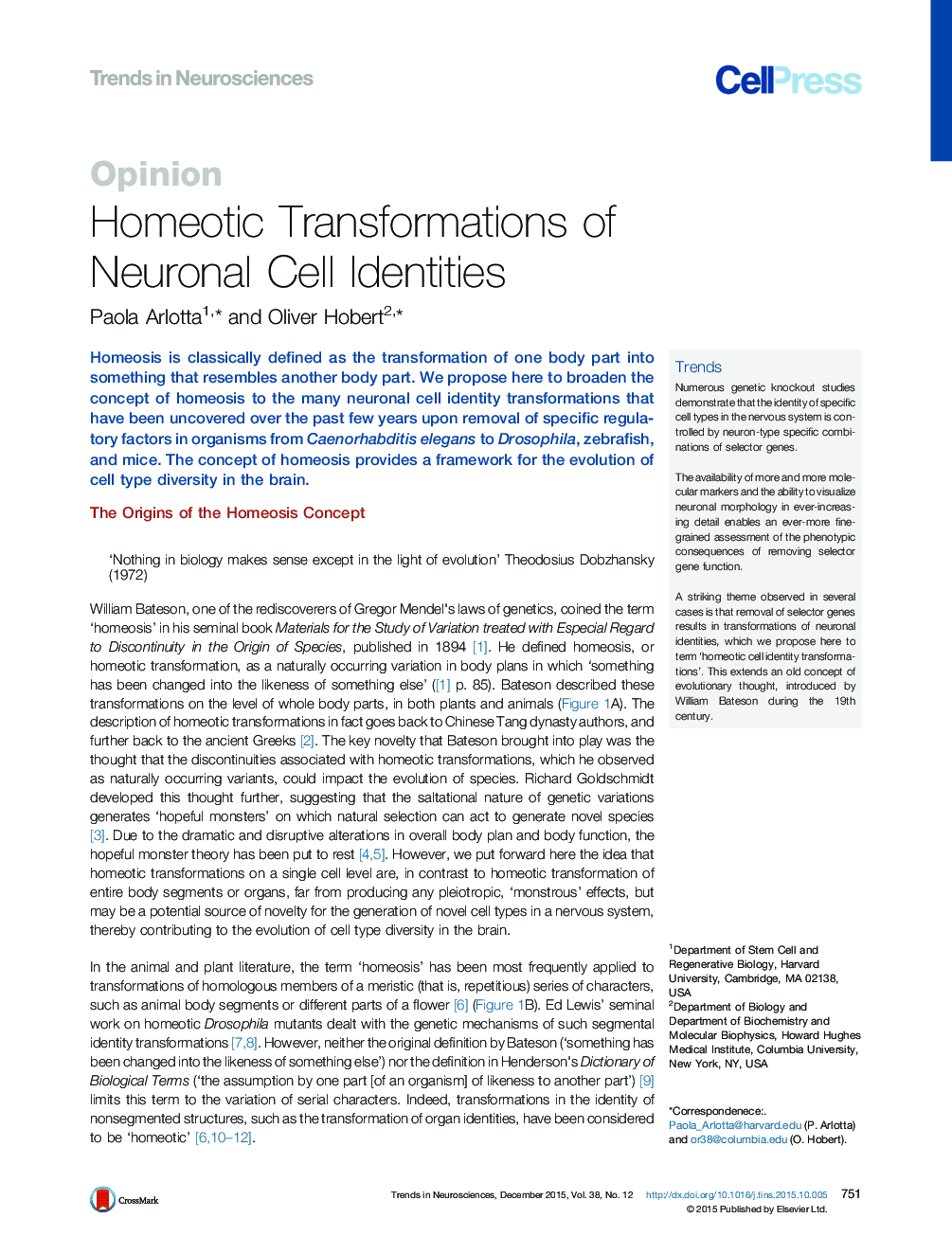| Article ID | Journal | Published Year | Pages | File Type |
|---|---|---|---|---|
| 4354207 | Trends in Neurosciences | 2015 | 12 Pages |
Homeosis is classically defined as the transformation of one body part into something that resembles another body part. We propose here to broaden the concept of homeosis to the many neuronal cell identity transformations that have been uncovered over the past few years upon removal of specific regulatory factors in organisms from Caenorhabditis elegans to Drosophila, zebrafish, and mice. The concept of homeosis provides a framework for the evolution of cell type diversity in the brain.
TrendsNumerous genetic knockout studies demonstrate that the identity of specific cell types in the nervous system is controlled by neuron-type specific combinations of selector genes.The availability of more and more molecular markers and the ability to visualize neuronal morphology in ever-increasing detail enables an ever-more fine-grained assessment of the phenotypic consequences of removing selector gene function.A striking theme observed in several cases is that removal of selector genes results in transformations of neuronal identities, which we propose here to term ‘homeotic cell identity transformations’. This extends an old concept of evolutionary thought, introduced by William Bateson during the 19th century.
